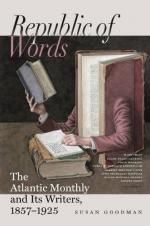There is an incredible fascination to many minds in these investigations into the traditions and beliefs of antiquity. We feel in their presence that they are the oldest things; the most ancient books, or buildings, or sculptures are modern by their side. They represent the childish instincts of the human mind,—its gropings after Truth,—its dim ideals and shadowings forth of what it hopes will be. They are the earliest answers of man to the great questions, whence and whither?
* * * * *
The most ancient people of Central America, according to M. de Bourbourg,—a people referred to in all the oldest traditions, but of whom everything except the memory has passed away,—are the Quinames. Their rule extended over Mexico and Guatemala, and there is reason to suppose that they attained to a considerable height of civilization. The only accounts of their origin are the oral traditions repeated to the Spaniards by the Indians of Yucatan,—traditions relating that the fathers of this great nation came from the East, and that God had delivered them from the pursuit of their enemies and had opened to them a way over the sea. Other traditions reveal to us the Quinames as delivered up to the most unnatural vices of ancient society. Whether the Cyclopean ruins scattered over the continent,—vast masses of stone placed one upon another without cement, which existed before the splendid cities whose ruins are yet seen in Central America,—whether these are the work of this race, or of one still older, is entirely uncertain.
The most ancient language of Central America, the ground on which all the succeeding languages have been planted, is the Maya. Even the Indian languages of to-day are only combinations of their own idioms with this ancient tongue. Its daughter, the Tzendale, transmits many of the oldest and most interesting religious beliefs of the Indian tribes.




